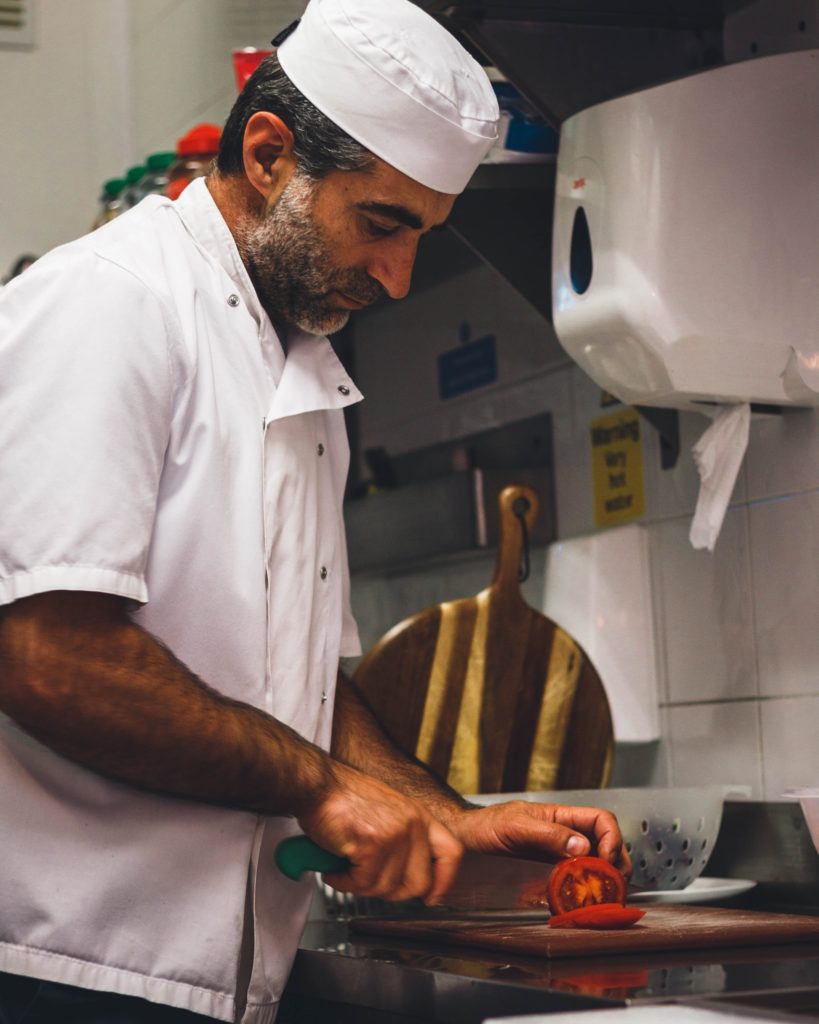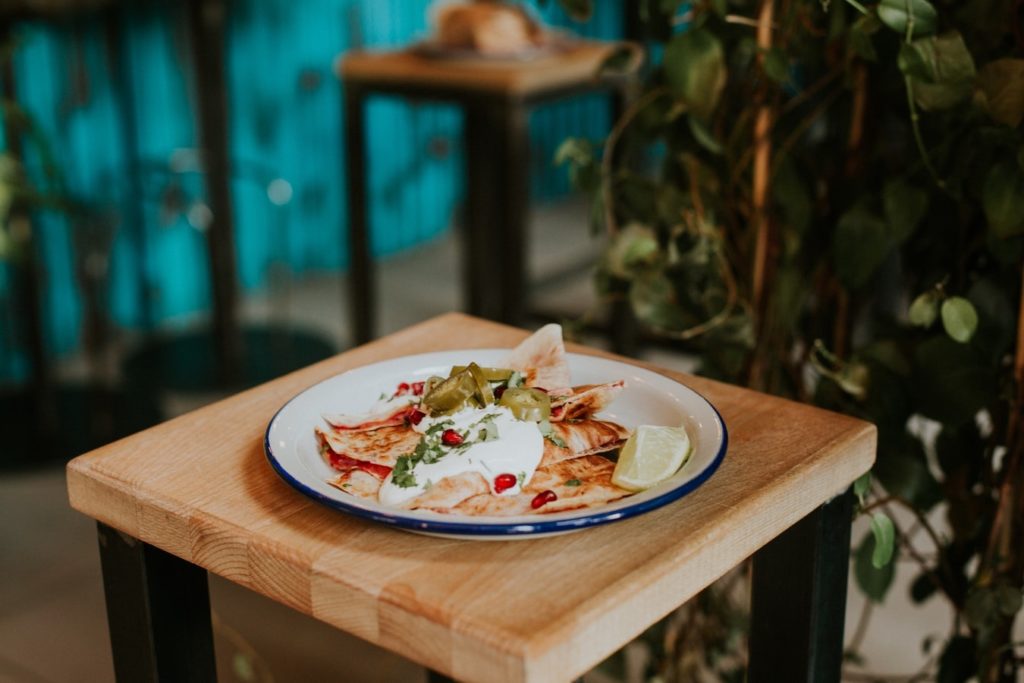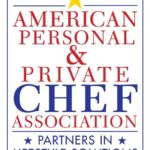A personal chef is a trained cook who charges a fee to prepare at-home meals for clients. Personal chefs are often employed by one family or one household, while some chefs work with many clients either on a rotating basis or with the help of Sous-chefs (assistant chefs).
The skilled personal chef customizes meal plans in consultation with the customer, going over any specific desires and cravings for the coming week, as well as dietary requirements to meet any medical conditions, including food allergies, high blood pressure, diabetes, obesity and other health issues.

Either with the help of assistants or on their own, personal chefs then do the shopping for the groceries needed to prepare the meals. They will then cook the food in the client’s home and typically clean up afterward. Personal chefs are in demand among high net-worth individuals who can afford their own gourmet cook and extremely busy professionals who desire the time saving convenience of having their shopping done by someone else — and their meals prepared and ready for them when they come home.
Personal chefs are almost always self-employed and set their own schedules in accordance with their clients’ needs. When the personal chef is just starting out, it might be necessary to work in restaurants for supplemental income while building a client base.
For those who love to cook and enjoy delighting diners, a career as a personal chef can be rewarding. Many personal chefs find they can run a catering business on the side, making good money for preparing and serving food at special events, conferences with banquet ceremonies, and weddings.
Now that you’re interested in learning how to become a personal chef, let’s get cooking.
In this article you’ll learn:
- How much money you can make as a personal chef
- The required training and certifications
- Professional groups to join
- Employment opportunities for personal chefs
- Finding clients
- Plus helpful tips

How much money can you make?
Personal chefs earn an average of $37,870 per year, according to the US Bureau of Labor Statistics. The top 10 percent of personal chefs make $81,670 annually. California and New York have the largest number of employed personal chefs in the United States.
Training and Certification
Enrolling in a culinary arts training program is the first step in developing your cooking skills so you’ll be able to operate a successful personal-chef business.

You must learn basic cooking skills through training and hands-on work in the kitchen. Many personal chefs launch their careers working for a restaurant owner, perhaps rising to the role of head chef before moving on to self-employment. Others work for catering companies, then set out on their own. This might take anywhere from 2-5 years to achieve the level of experience clients may expect in a personal chef.
The benefits of formal training are twofold: first, you’ll learn cutting-edge cooking techniques for preparing a rich variety of delicious meals, and second, certification from a culinary school is proof of your professionalism and dedication to the art and craft of preparing fine cuisine.
Here’s an extensive listing of training and certification programs for personal chefs.

What you’ll learn in training:
- How to maintain a sanitary cooking environment
- Planning menus and managing high-volume cooking.
- Creating customized meal plans for each client/household
- Shopping for the raw ingredients and specialty items (such as organic vegetables)
- Storing the food safely in the client’s kitchen and pantry
- Proper food handling skills to prevent spoilage and illness
- Preparing instructions for clients to heat-up and serve their food if eating outside normal meal hours
- Proper sanitization in the kitchen and cooking/preparation surfaces
- The importance of following the client’s instructions on diet and nutritional requirements
Professional Groups to Join
The United States Personal Chef Association is the main organization for professionals in the field. A training membership is $595 and includes many of the courses and instruction needed to be a personal chef. Plus, you’ll be able to network with other members to share ideas, experiences and possible job openings.
The mission of the association is to maintain the highest standards of conduct of all members, with the expectation that each member will adhere to a code of ethics. The association offers assistance in maintaining a successful personal chef business, encourages participation in sponsored conferences, promotes healthy and safe kitchen practices, and enforces the rules laid out for members in the code of ethics.
The Code of Ethics ensures the highest quality of service, cleanliness and safety associated with private chef services.
Employment
Contact the managers of country clubs as well as the homeowners association in gated communities and other wealthy neighborhoods. Offer to meet with them to discuss your services. Leave your contact information and an attractively designed flyer outlining your skills and experience as a personal chef. Ask these individuals if they will alert their homeowners to your availability and interest in working for them as a personal chef. Be ready to provide sterling references. You will almost certainly be vetted thoroughly before clients allow you into their homes and kitchens.

Sign up for an online listing in personal chef directories. Many websites offer search services for consumers looking to hire a personal chef, live-in caregiver, tutors for their kids and more. Here’s one example. Be sure you understand the fees for listing and any commission or recurring expense you may be charged for promoting your business on these directory services.
Set up job notification alerts on services such as Indeed.com. When you set up an alert, you’ll get an email listing any job openings related to your career interests. That way, the opportunities come to you and you don’t have to run an Internet search every day, looking for work.
Finding Clients
Congratulations. You’ve decided to become an entrepreneur and create your own destiny as a personal chef.
Business cards and a basic website should be the core of your marketing toolkit as a personal chef. The website can be as fancy as you desire, with photos of your classes in session (get permission from any students who are visibly recognizable). The website must also include your business location and contact information at the top of every page. Printed flyers will also be helpful for distributing when you meet clients in-person for an interview.
In addition to your business website and flyers, the next thing to do is create an Instagram account to showcase your artistry in the kitchen. Professional images of meals you’ve prepared, tables set with elegant placeware, perhaps a gleaming row of copper pots and pans hanging in the kitchen – these are the types of pictures that can elevate your online game. Instagram is the #1 online venue for creative professionals to promote themselves. It’s a free marketing tool that’s always working on your behalf.
Next, set up a Facebook page for your personal chef practice so that people searching for a personal chef can find you. This, too, is a free service that can benefit your business by putting you front-and-center of potentially thousands of clients.

Other strategies for attracting new business:
- Ask clients to review your culinary services online. According to a recent survey, 90% of people say their buying decisions are influenced by positive online reviews.
Good to know
Because food preparation takes a lot of time, especially if you’re serving three meals a day, personal chefs will likely spend many hours in the client’s home. Working 12-hour days to prepare multiple meals is not uncommon. When employed by a private household, some personal chefs may even reside with the family, so the chef is available to the employers at any given time. This lifestyle may not be suitable for some personal chefs who want the autonomy of their own home.
Families with a live-in chef may well treat their culinary employee just like another member of the family, but chefs must maintain a careful professional distance and not overstep any boundaries.
In the course of your work as a personal chef, you will likely learn many private details about a household simply by virtue of spending so much time in that household. You may become privy to secrets or sensitive information, as people often share more than they may have intended when they begin to feel comfortable around someone, even an employee. So discretion and confidentiality are skills just as important as a personal chef’s abilities in searing a good steak or baking a soufflé.

Finally, although some personal chefs may live with their employers, chefs will likely be responsible for providing their own health care coverage, paying taxes and planning for retirement. You’ll probably want to discuss these matters with a financial advisor to plan well.
If you enjoyed this article, check out some more great PocketSuite.io content that can help you grow your career as a personal chef. Here’s a great place to start.PocketSuite has thousands of business owners who all started where you are right now. Our community is always happy to help you ramp up, grow your client base, and achieve your income goals, both within the PocketSuite app and as part of our exclusive Facebook Community Group. PocketSuite’s vision is for any professional to be able to work for themselves and make a great living. It starts here. It starts with you. It starts today. Let’s get started, download PocketSuite now! Feel free to reach out with any questions (we’d love to hear from you)! Text us @ (415) 841-2300.





